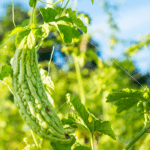Zero Budget Natural Farming in Sustainable Agriculture
Are you ready to revolutionize your farming practices and embark on a journey of sustainable agriculture? Welcome to our comprehensive guide on Zero Budget Natural Farming (ZBNF). In this article, we will explore the essential practices and principles that form the foundation of ZBNF, empowering you to grow crops in harmony with nature’s balance. Get ready to unlock the secrets of ZBNF and transform your farming methods. Let’s dive in and explore the world of sustainable agriculture!
Understanding Zero Budget Natural Farming
Zero Budget Natural Farming is an innovative farming approach that aims to eliminate the use of external inputs such as chemical fertilizers and pesticides, while promoting natural and ecological methods. By harnessing the power of nature, ZBNF offers a sustainable and cost-effective solution for farmers. It emphasizes the importance of biodiversity, soil health, water conservation, and holistic farming practices. Let’s delve deeper into the principles that guide ZBNF.
The Principles of Zero Budget Natural Farming

3.1 Zero External Inputs: Embracing Nature’s Balance
In ZBNF, the use of chemical fertilizers and pesticides is completely eliminated. Instead, the focus is on harnessing the power of nature’s own resources. By adopting natural techniques such as composting, vermiculture, and green manure, farmers can enrich the soil and provide the necessary nutrients to their crops without relying on external inputs. This not only reduces costs but also ensures the long-term sustainability of the farming ecosystem.
3.2 Living Root Cover: Nurturing the Soil
Maintaining a living root cover is a vital practice in ZBNF. By cultivating crops with deep-rooted systems, the soil structure is improved, erosion is minimized, and moisture retention is enhanced. Additionally, the living root cover promotes the growth of beneficial microorganisms in the soil, aiding in nutrient availability and overall soil health.
3.3 Minimal Soil Disturbance: Preserving Soil Health
In ZBNF, minimal soil disturbance is a key principle. Excessive tilling and plowing can disrupt the soil structure and lead to nutrient loss. Instead, adopting conservation tillage techniques, such as zero-tillage or reduced tillage, helps preserve the soil’s natural fertility, reduces erosion, and enhances water infiltration. This practice also promotes the growth of beneficial soil organisms and improves the overall soil health.
3.4 Bio Stimulants: Catalysts for Sustainable Growth
Bio stimulants play a crucial role in ZBNF by stimulating plant growth, improving nutrient uptake, and enhancing the plant’s ability to resist diseases and pests. By using natural substances like cow urine, cow dung, and fermented plant extracts, farmers can create bio stimulants that nourish their crops and promote healthy development.
3.5 Native Seeds and Mixed Farming: Promoting Biodiversity
ZBNF emphasizes the use of native seeds, which are well-adapted to local conditions and have higher resilience against pests and diseases. By preserving and using local seed varieties, farmers contribute to the preservation of biodiversity and ensure the availability of diverse genetic resources for future generations. Mixed farming, the practice of growing different crops together, further enhances biodiversity and reduces the risk of crop failure.
3.6 Mixed Cropping and Tree Integration: Creating Ecological Harmony
Mixed cropping involves cultivating multiple crops in the same field simultaneously. This practice promotes ecological harmony by utilizing the complementarity of different crops, enhancing nutrient cycling, and reducing pest and disease pressure. Tree integration, the inclusion of trees in farming systems, provides shade, improves soil fertility, and supports the growth of beneficial insects and birds.
3.7 Moisture and Water Conservation: Ensuring Resource Efficiency
Efficient water management is a fundamental aspect of ZBNF. By adopting practices such as mulching, drip irrigation, and water harvesting techniques, farmers can conserve water, prevent soil erosion, and improve overall water-use efficiency. These practices are particularly beneficial in water-stressed regions and contribute to sustainable agriculture.
3.8 Animal Integration: Holistic Farming Practices
In ZBNF, animals play a crucial role in maintaining a balanced farming ecosystem. By integrating livestock into the farming system, farmers can utilize animal waste for composting, increase soil fertility, and enhance nutrient cycling. The symbiotic relationship between crops and livestock promotes a holistic and sustainable approach to farming.
3.9 Organic Debris and Soil Enrichment: Fostering Nutrient Cycling
Organic debris, such as crop residues and farm waste, is a valuable resource in ZBNF. By incorporating organic debris into the soil, farmers enhance nutrient cycling, improve soil structure, and increase organic matter content. This practice not only reduces the need for external inputs but also promotes the long-term sustainability of the farming system.
3.10 Plant Extracts for Pest Control: Natural Alternatives
In ZBNF, pest control is achieved through natural alternatives rather than synthetic pesticides. Plant extracts with pest-repellent properties, such as neem, garlic, and chilli, can be used to deter pests and protect crops. These natural methods minimize chemical residues, preserve beneficial insects, and promote a healthy farming ecosystem.
3.11 Elimination of Artificial Inputs: Chemical-Free Agriculture
The overarching principle of ZBNF is the complete elimination of artificial inputs. By embracing chemical-free agriculture, farmers can protect the environment, preserve human health, and ensure the sustainability of their farming practices. ZBNF offers an alternative approach that is both economically viable and ecologically responsible.
Concerns and Considerations

4.1 Government Support: The Need for Increased Funding
While ZBNF has gained recognition for its numerous benefits, there is a need for increased government support and funding to promote its widespread adoption. Governments can play a vital role by providing financial assistance, training programs, and policy frameworks that encourage farmers to transition to ZBNF.
4.2 Long-Term Viability: Ensuring Sustainable Impact
For ZBNF to have a lasting impact, it is crucial to ensure its long-term viability. Continuous research, knowledge sharing, and monitoring are essential to address challenges and refine farming practices. Collaborative efforts involving farmers, scientists, and policymakers can contribute to the sustainable success of ZBNF.
4.3 Yield Decline Challenges: Lessons from Sikkim
While ZBNF has proven successful in various regions, it is important to acknowledge the potential challenges it may face, such as initial yield decline during the transition phase. Lessons from Sikkim, a state in India that has adopted ZBNF on a large scale, can provide valuable insights on managing yield decline and optimizing crop productivity.
4.4 Impact on Farmer Income and Food Security
ZBNF offers promising prospects for enhancing farmer income and ensuring food security. By reducing input costs and promoting diversified cropping systems, ZBNF can improve farmers’ economic well-being and contribute to a sustainable and secure food supply for the community.
Components of Zero Budget Natural Farming
5.1 Bijamrita: Seed Treatment for Disease Prevention
Bijamrita is a natural seed treatment technique used in ZBNF to protect seeds from diseases and pests. By soaking the seeds in a mixture of cow dung, cow urine, and other plant extracts, farmers can enhance seed germination, improve seedling vigor, and prevent seed-borne diseases.
5.2 Jiwamrita: Microbial Liquid for Nutrient Availability
Jiwamrita is a microbial liquid formulation that enriches the soil with beneficial microorganisms. By fermenting ingredients such as cow dung, jaggery, and gram flour, farmers can enhance nutrient availability, promote soil health, and improve overall crop productivity.
5.3 Acchadana/Mulching: Creating Favorable Microclimates
Acchadana, also known as mulching, involves covering the soil with organic materials such as straw, leaves, or crop residues. This practice creates a favorable microclimate by conserving soil moisture, regulating soil temperature, suppressing weed growth, and preventing soil erosion.
5.4 Whapasa: Balancing Soil Moisture and Air
Whapasa refers to the management of soil moisture and air. It involves techniques such as controlled irrigation, alternate wetting and drying, and maintaining the ideal moisture balance for different crops. By optimizing soil moisture and air circulation, farmers can prevent waterlogging, improve nutrient uptake, and enhance root development.
5.5 Pest Management: Natural Alternatives
Pest management in ZBNF focuses on natural alternatives to synthetic pesticides. Let’s explore some effective options:
5.5.1 Agniastra: Pesticide for Leaf Rollers and Borers
Agniastra, a natural pesticide, is used to control leaf rollers and borers. It is prepared by soaking neem leaves, tobacco leaves, and green chili in water. This concoction acts as a repellent, preventing pest infestations and protecting the crops.
5.5.2 Bramhastra: Effective Control for Sucking Pests
Bramhastra is a natural pesticide used to combat sucking pests such as aphids and whiteflies. It is prepared by fermenting various plant materials like garlic, neem leaves, and cow urine. Bramhastra acts as a potent deterrent, ensuring the protection of crops against these damaging pests.
5.5.3 Neemastra: Combatting Mealy Bugs and Sucking Pests
Neemastra, derived from neem leaves, is an effective pesticide for controlling mealy bugs and other sucking pests. By crushing neem leaves and extracting their juice, farmers can create a natural and eco-friendly solution to safeguard their crops.
Conclusion
Congratulations! You have now gained a comprehensive understanding of Zero Budget Natural Farming and its essential practices for achieving sustainable agriculture. By embracing the principles of ZBNF, such as zero external inputs, minimal soil disturbance, biodiversity promotion, and holistic farming practices, you can embark on a transformative journey towards a greener and more sustainable future. Remember, by working in harmony with nature, we can achieve remarkable results and ensure the long-term well-being of our farming ecosystems. Start implementing the practices of ZBNF today and witness the positive impact it brings to your farm and the environment. Happy farming!







